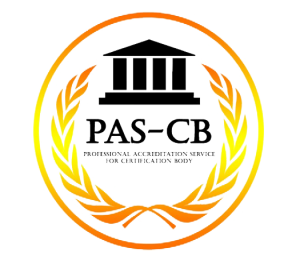Accreditation
- PASCB
Accreditation
PASCB (Program for Accreditation of Standardization & Conformity Bodies) is committed to ensuring that Conformity Assessment Bodies (CABs) operate with competence, impartiality, and consistency. We evaluate the systems and personnel of CABs to verify their compliance with international standards and requirements.

- PASCB
Accreditation Process
General Requirements for Conformity Assessment Bodies (CABs). PASCB ensures that every CAB seeking accreditation meets the following key requirements:
Personnel Competence
CABs must ensure all certification staff are competent and define a clear process with expected outcomes PASCB reviews criteria documents outcomes and personnel evaluations
Certification Functions
CABs must define and apply competence criteria for all certification activities including audits and decisions
Management Oversight
Competence is also required for management impartiality committees internal auditors and evaluators
Effectiveness and Records
Results must show consistent achievement as proof of effective processes PASCB checks documentation to verify this
- ISO 15378 Certification
About ISO 15378:2011 & ISO 15378:2006
ISO 15378 specifies requirements for a Quality Management System (QMS) for manufacturers of primary packaging materials for medicinal products. It incorporates Good Manufacturing Practice (GMP) and ISO 9001 standards to ensure compliance with regulatory and customer requirements.

Scope & Application
This standard applies to manufacturers of:
- Glass
- Plastic
- Rubber
- Aluminum
- Other materials that come into direct contact with medicinal products.
It is used for:
- Design and production
- Quality control
- Regulatory compliance
- Certification of packaging operations

Benefits of ISO 15378 Certification
Partnering with PASCB for ISO 15378 certification offers key advantages:
- Improved operational efficiency and process control
- Reduced contamination, mix-ups, and manufacturing errors
- Enhanced compliance with legal and regulatory requirements
- Greater customer confidence in product quality
- Clear demonstration of organizational competence
- Cost savings and risk reduction
- Competitive market advantage
- PASCB
Why Choose PASCB?

Expert Support
Our experienced support team is ready to handle diverse technical and operational inquiries with accuracy and professionalism.
Transparent & Objective Process
We uphold integrity and clarity at every stage of the accreditation process, from application to decision.

Collaborative Approach
We don’t just assess—we guide and support certification bodies in understanding and improving their management systems.

Quality and Timeliness Commitment
PASCB is dedicated to delivering accurate accreditation results without delay, maintaining the highest standards of quality.
- Get Started
Professional Solutions for Reliable and Accredited Certification Bodies.

